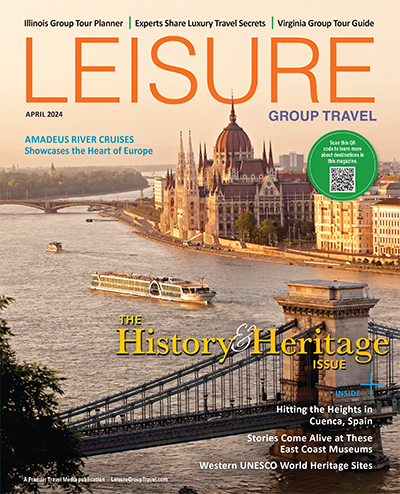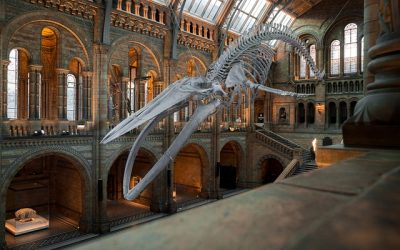This month’s Leisure Group Travel highlights the influence of women in the travel sector, showcasing female leaders and trends in women’s group trips.
Current Issue – April 2024
History & Heritage
Escape to the past with 2024’s surge in history and heritage tours, featured in Leisure Group Travel’s latest edition. Explore ancient cities, iconic parks, and mysterious historic sites, from Toledo, Spain, to Yellowstone. Embrace the vintage charm of rail travel and discover the best attractions in Virginia and Illinois. Step back in time for a journey of tranquility and authenticity.
Leisure Group Travel Magazine Archives
Are you in search of inspiration for your next group adventure or looking for valuable insights from industry experts? You’ve come to the right place. Welcome to the Archive Section of Leisure Group Travel Magazine, where you can browse through a treasure trove of past issues filled with invaluable articles, guides, and features.
Whether you’re a seasoned tour planner or new to the world of group travel, our archives offer a rich repository of content that spans a diverse range of topics—destinations, accommodations, dining experiences, and more. Each issue is a reflection of our commitment to help you navigate the intricate nuances of planning unforgettable travel experiences for your group.
Take a step back in time and explore articles that have shaped the landscape of group travel, or catch up on issues you may have missed. Dive into the world of Leisure Group Travel Magazine all over again, right here in our archives.
Get the Next Magazine FREE
Leisure Group Travel December Edition
This month’s Leisure Group Travel highlights the influence of women in the travel sector, showcasing female leaders and trends in women’s group trips.
Leisure Group Travel October Edition
This month’s Leisure Group Travel highlights the influence of women in the travel sector, showcasing female leaders and trends in women’s group trips.
August 2023 Leisure Group Travel
Thrill-seekers and adventurers, rejoice. The August issue of Leisure Group Travel has arrived. This edition, the Outdoor and Adventure issue, is packed with exciting content for outdoor enthusiasts of all ages and skill levels.
June Leisure Group Travel
As summer hits its stride and travelers embrace the great outdoors, here’s a reminder that many wonderful things can be found indoors as well. The June edition of Leisure Group Travel emphasizes that message as we spotlight some of the finest museums that dot this country’s landscape.
2023 April Leisure Group Travel
With spring and summer on the way many travelers are starting to plan summer vacations and look for exciting festivals to experience. After being stuck inside and sheltering from the winter, nothing will warm the soul and incite excitement like getting ready for that next adventure.
February Leisure Group Travel
Leisure Group Travel feels your pain and our February issue explores a multitude of locales that are ready to serve you when you’re ready to hit the road.
December Leisure Group Travel
LGT shines a spotlight on six of the country’s top travel luminaries and gains valuable insight on how planners can thrive in 2023 and beyond. LGT also unveils our yearly Group Intentions Survey, which provides illuminating answers from our readers that show what makes the tourism industry tick.
October 2022 Leisure Group Travel Magazine
Our outdoor and adventure issue visits a variety of bold destinations that will appeal to both extreme backpackers and casual pathfinders.










